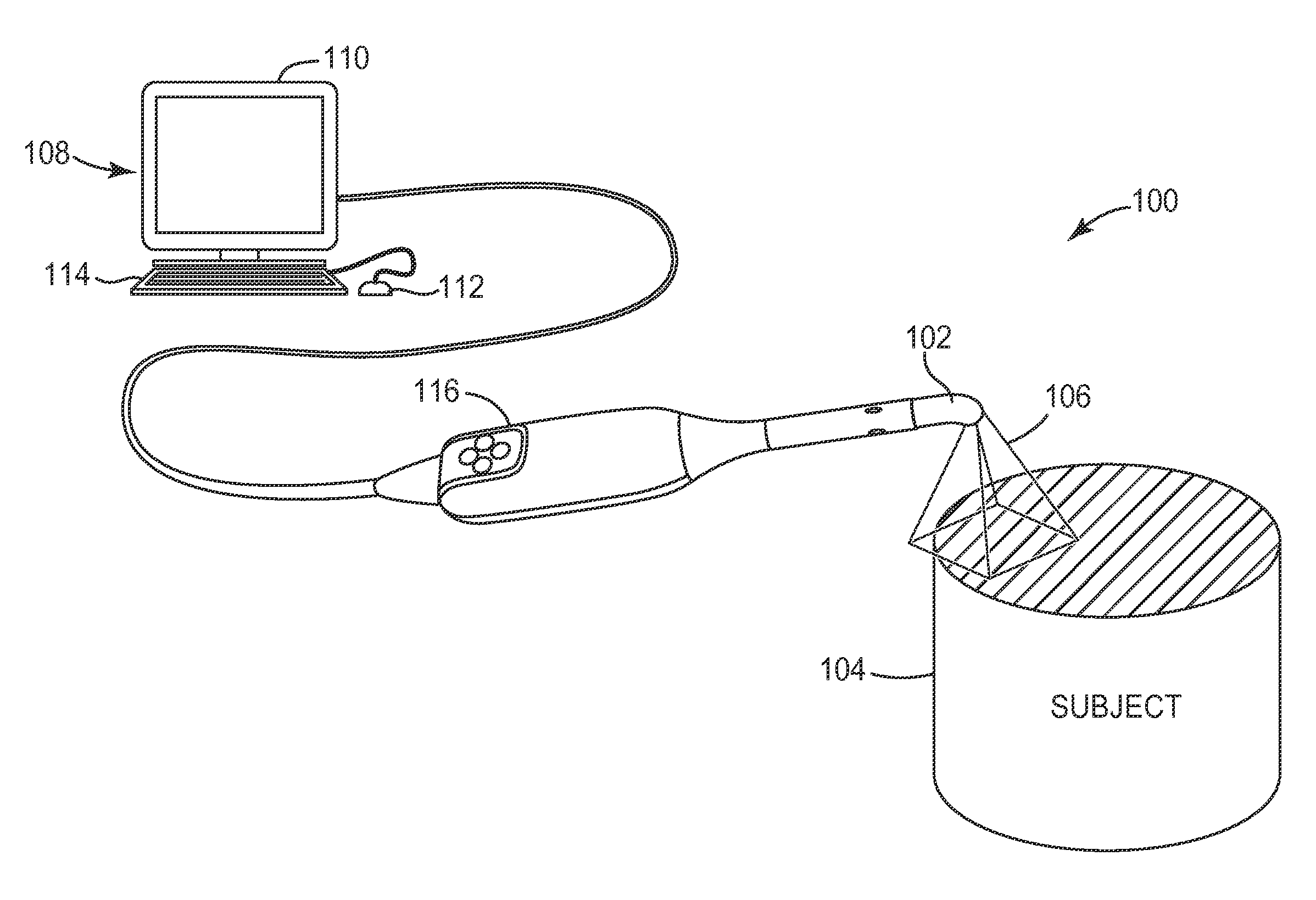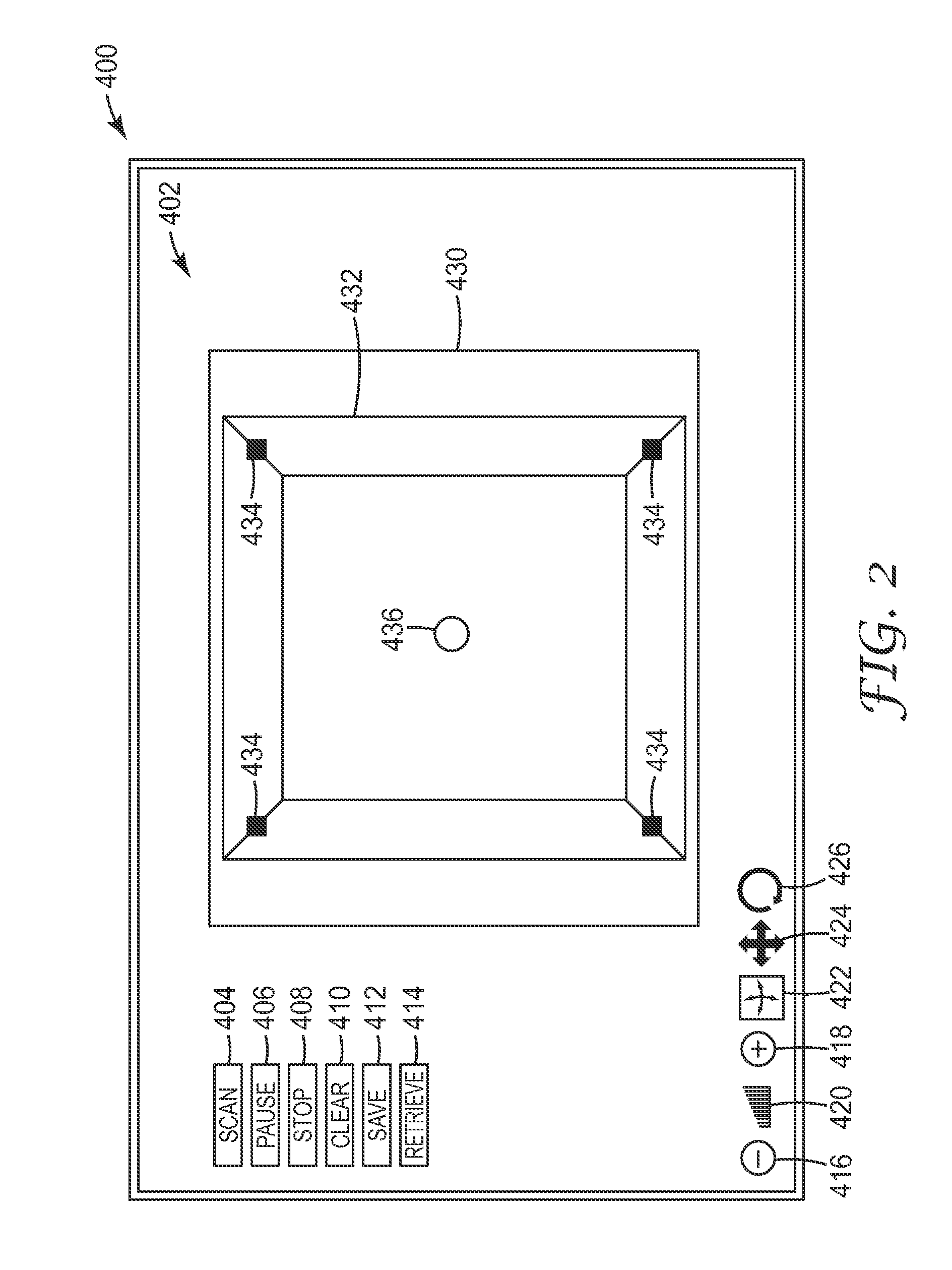Space carving in 3D data acquisition
a technology of 3d data and space carving, applied in the field of space carving, can solve the problems of obstructing the scanner's view of the scanned surface, encumbered display of three-dimensional data, etc., and achieve the effect of improving accuracy and speed, and real-time display of scan results
- Summary
- Abstract
- Description
- Claims
- Application Information
AI Technical Summary
Benefits of technology
Problems solved by technology
Method used
Image
Examples
Embodiment Construction
[0019]The following description relates to use of space carving techniques to improve processing of three-dimensional data acquired from a three-dimensional scanner. While the description emphasizes continuous scanning and dental applications, it will be appreciated that the inventive concepts disclosed herein are not limited to the specific embodiments disclosed. For example, the space carving techniques described herein may be used to improve any three-dimensional acquisition or processing in which the capture of three-dimensional data occurs over a period of time such as structured light projection, x-ray computed tomography, optical coherence tomography, interferometry, and the like. The techniques described herein may similarly be employed in any three-dimensional processing environment where accuracy or time of computation can benefit from the exclusion of outlier data. Similarly, while the following description emphasis use of space carving to avoid processing known outliers,...
PUM
 Login to View More
Login to View More Abstract
Description
Claims
Application Information
 Login to View More
Login to View More - R&D
- Intellectual Property
- Life Sciences
- Materials
- Tech Scout
- Unparalleled Data Quality
- Higher Quality Content
- 60% Fewer Hallucinations
Browse by: Latest US Patents, China's latest patents, Technical Efficacy Thesaurus, Application Domain, Technology Topic, Popular Technical Reports.
© 2025 PatSnap. All rights reserved.Legal|Privacy policy|Modern Slavery Act Transparency Statement|Sitemap|About US| Contact US: help@patsnap.com



